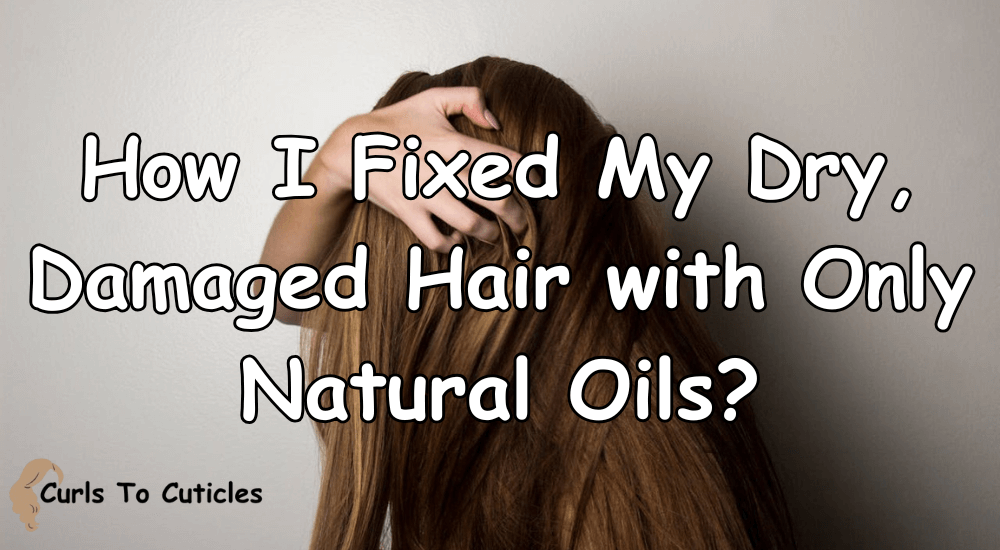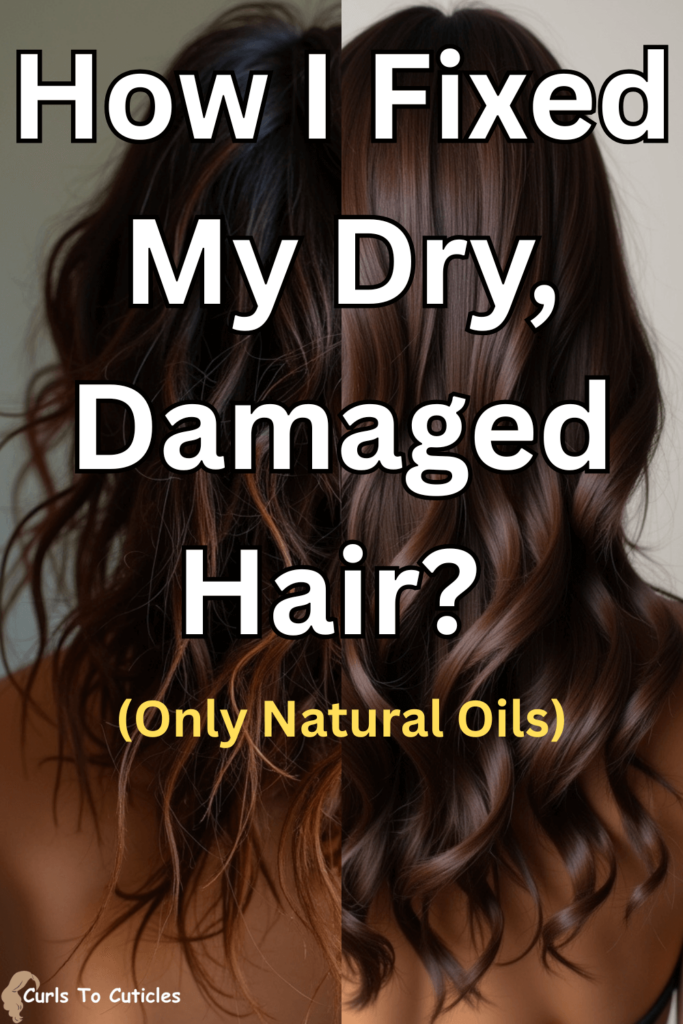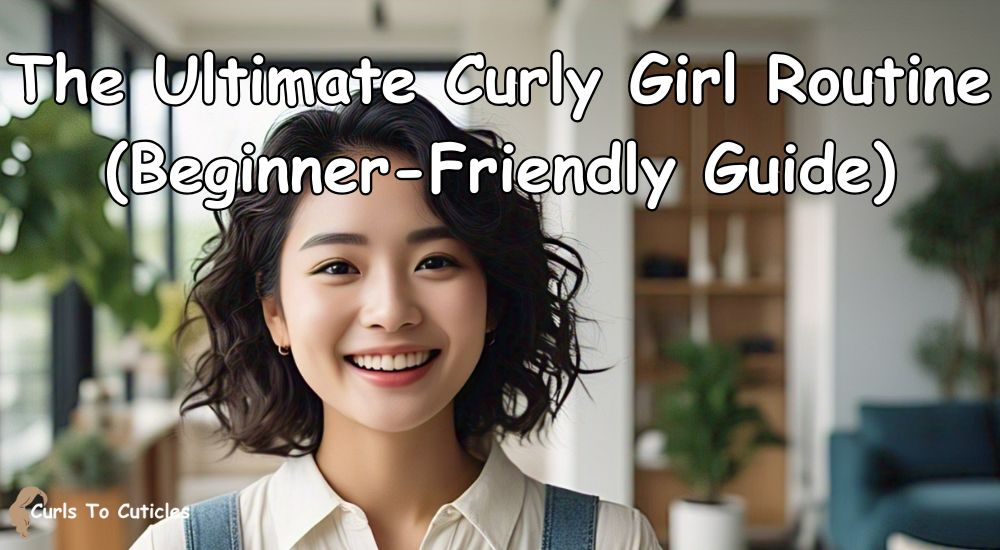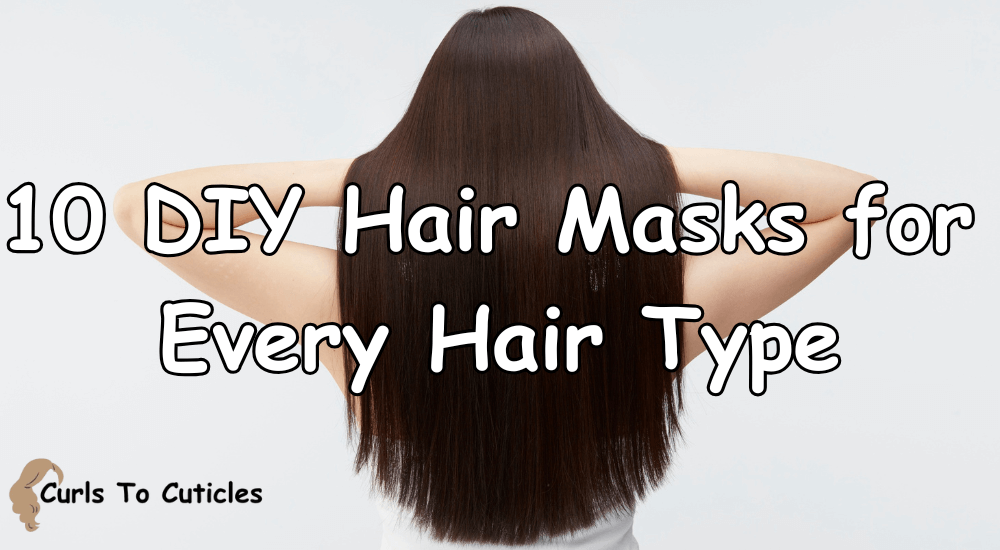Now Reading: How I Fixed My Dry, Damaged Hair with Only Natural Oils? (Weekly Routine Revealed)
-
01
How I Fixed My Dry, Damaged Hair with Only Natural Oils? (Weekly Routine Revealed)
How I Fixed My Dry, Damaged Hair with Only Natural Oils? (Weekly Routine Revealed)

My hair used to feel like straw. It looked dull, frizzy, and lifeless. Every time I brushed it, I lost a handful of strands. Heat styling made it worse. Chemical products promised results but only gave me temporary shine. I decided to stop using commercial hair products. Instead, I turned to natural oils.
At first, I was unsure. I didn’t know much about oils or how to use them. But I wanted to give my hair a break. I started reading, learning, and testing. Over time, I found a routine that worked for me. My hair is now soft, shiny, and strong. Here’s how I fixed my dry, damaged hair using only natural oils.

Step 1: I Stopped Using Heat and Chemicals
The first thing I did was stop using heat styling tools. No flat irons, no curling wands, no blow dryers. I also cut back on shampooing. I stopped using products with sulfates, parabens, and alcohol. These ingredients dried out my hair even more. My goal was to let my hair rest.
During this time, I focused on hydration. I drank more water. I ate more fruits and vegetables. I added foods rich in omega-3 and vitamin E. Healthy hair starts inside the body. I wanted to give it the nutrients it needed to grow and repair.
Step 2: I Chose the Right Oils
I tested different oils before finding the ones that worked best for me. Some were too heavy. Others didn’t give enough moisture. I kept track of how my hair reacted. Here are the oils I now use regularly:
1. Coconut Oil
I use coconut oil for deep conditioning. It penetrates the hair shaft and reduces protein loss. I apply it once a week before washing my hair. I warm it slightly, rub it between my hands, and coat my hair from root to tip. I leave it on for at least two hours. Sometimes, I leave it overnight.
2. Argan Oil
Argan oil helps with shine and smoothness. I use it after washing, while my hair is still damp. I take a few drops and apply it to the ends. It reduces frizz and protects against breakage. It’s lightweight and doesn’t leave my hair greasy.
3. Castor Oil
Castor oil helped me with hair growth. I massage it into my scalp once a week. It improves blood circulation and strengthens the roots. It’s thick, so I mix it with a lighter oil like coconut or almond oil.
4. Olive Oil
Olive oil adds softness. I use it when my hair feels extra dry. It works well for scalp massages too. It helps with flakiness and dandruff. I apply it to my scalp and let it sit for an hour before washing it out.
5. Jojoba Oil
Jojoba oil balances oil production. I use it when my scalp feels dry but not itchy. It’s close to the natural oils of the scalp. It absorbs easily and doesn’t clog pores.
Step 3: I Built a Weekly Oil Routine

Having a plan helped me stay consistent. I created a simple weekly schedule. I didn’t overdo it. My goal was to keep the hair nourished without overwhelming it.
- Monday: Scalp massage with castor oil + coconut oil mix
- Wednesday: Midweek shine boost with argan oil on dry hair
- Friday or Saturday: Deep treatment with warm coconut or olive oil
- Daily: A few drops of jojoba oil on dry ends, as needed
I always adjusted based on how my hair felt. If it was too oily, I skipped a day. If it felt dry, I added a little more.
Step 4: I Learned the Right Way to Apply Oil
At first, I made mistakes. I used too much oil. I didn’t wash it out properly. Sometimes, my hair felt greasy for days. Over time, I learned what worked.
Here’s how I apply oil now:
- Detangle First: I gently comb my hair to remove knots. This helps spread the oil evenly.
- Warm the Oil: I heat the oil slightly. Warm oil penetrates better.
- Massage the Scalp: I use my fingertips in a circular motion for 5–10 minutes. This boosts blood flow.
- Coat the Hair: I apply the oil from the scalp to the ends, focusing on the driest parts.
- Cover and Wait: I wrap my hair in a towel or use a shower cap. I leave the oil on for at least one hour.
When it’s time to wash, I apply shampoo before water. This breaks down the oil better. I rinse with lukewarm water, never hot. Hot water strips moisture.
Step 5: I Trimmed Regularly and Stayed Patient
Oils don’t repair split ends. I had to trim the damaged parts. I got rid of the worst breakage first. Then I trimmed every 8–10 weeks. I didn’t cut much—just enough to keep my hair healthy.
I also stayed patient. Results didn’t happen overnight. In the first month, I noticed less breakage. By the third month, my hair felt softer. By the sixth month, it looked shiny and full again.
Step 6: I Adjusted Based on Seasons and Hair Needs
In winter, my hair needs more moisture. I use heavier oils like castor and olive. In summer, I switch to lighter oils like argan and jojoba. I also protect my hair from sun and saltwater by applying a thin layer of oil before going outside.
If my scalp feels oily, I skip scalp oil and focus on the ends. If I’m sweating more, I wash more often and use less oil. I listen to my hair. I treat it like something living. That mindset helped a lot.
Step 7: I Used Oils for Styling Too
Natural oils worked great as a leave-in. I stopped using commercial serums and sprays. Here’s how I used oils in my styling routine:
- A few drops of argan oil for smoothing frizz after air drying
- Jojoba oil to tame flyaways before tying my hair
- Coconut oil on ends before braiding or bun styling
- Olive oil before swimming to reduce chlorine damage
These small steps made a big difference. My hair looked neater, and I avoided extra damage.
Step 8: I Combined Oils with Natural DIY Masks
Once a month, I made simple masks using oils and kitchen ingredients. These added a boost of moisture.
Here are two that worked well for me:
Honey + Coconut Oil Mask
- 2 tablespoons coconut oil
- 1 tablespoon honey
I warmed the mix, applied it to my hair, and left it for 1–2 hours.
Avocado + Olive Oil Mask
- Half a ripe avocado
- 2 tablespoons olive oil
I mashed and blended it, then applied it to dry hair. I left it for 30–45 minutes before rinsing.
These masks made my hair soft and smooth without needing store-bought treatments.
Step 9: I Stayed Consistent Without Overdoing It
I didn’t oil my hair every day. That would be too much. I stuck to my weekly schedule. I didn’t skip it, even if I was busy. Small, regular steps helped more than heavy treatments.
I also didn’t expect perfection. My hair still has a few rough days. But now, I know how to care for it. I have tools that work without causing harm.
Final Results and Lessons
Now, my hair is healthy. It’s no longer dry or brittle. I don’t see split ends as often. It has shine, bounce, and strength. I trust natural oils because they worked for me when nothing else did.
If you’re dealing with dry, damaged hair, I believe natural oils can help. Start slow. Test what works for your hair type. Stay patient. You don’t need fancy products or complicated routines. Sometimes, going back to basics is the best step forward.







